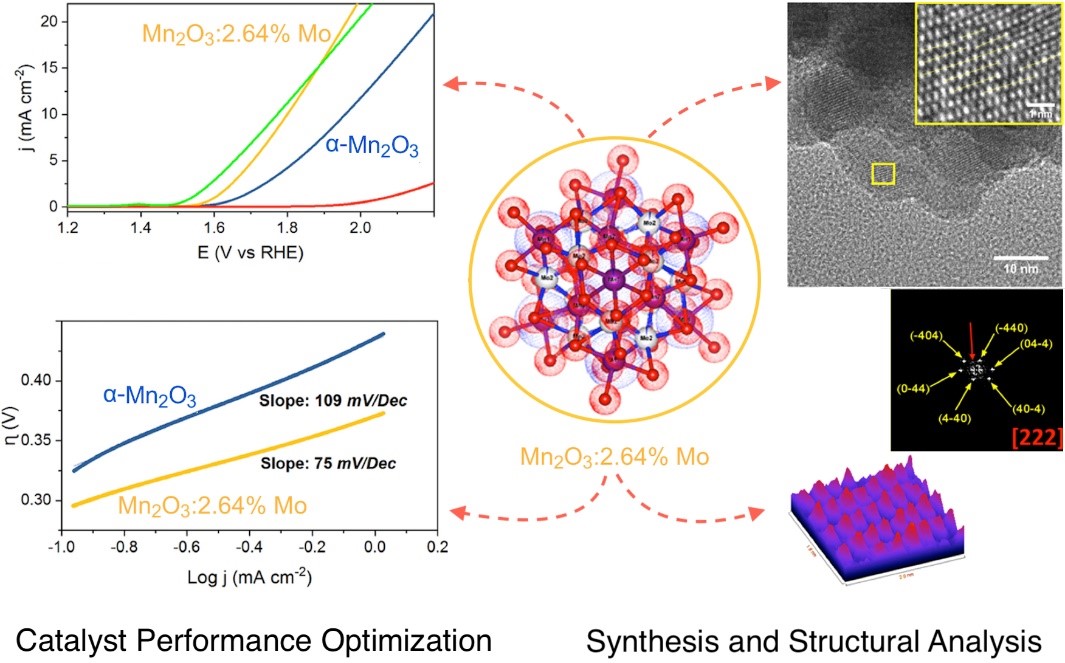Navigation auf uzh.ch
Navigation auf uzh.ch
We focus to a large extent on the development and mechanisms of water oxidation catalysts (WOCs) to master the oxygen evolution reaction (OER) as the most challenging part of water splitting. While Nature’s Photosystem II with its cuboidal {CaMn4O5} core in a complex environment has provided a self-repairing solution to this challenge, the translation of such resilience into robust, heterogeneous catalysts is still widely debated. To newly bridge molecular and solid catalyst design concepts, our research group covers a wide spectrum of catalysts in general – from bio-inspired molecular systems (e.g. J. Am. Chem. Soc. 2019, 141, 8846) over larger polyoxometalate (POM) clusters to nanomaterials and solids (e.g. perovskite WOCs: J. Am. Chem. Soc. 2016, 138, 1527). Within the URPP LightChEC, we will now focus on optimizing heterogeneous WOC performance via tuning synthetic protocols and synergistic catalytic mechanisms.
Selected highlights of our nanoscale and solid catalyst portfolio include the design of non-toxic InP/ZnS quantum dots for high performance photocatalytic hydrogen production and the unraveling of their core-shell pathways for improving stability and quantum yields (Nat. Comm. 2018, 9, 4009). In an international collaboration effort, we furthermore put forward new strategies for unraveling the key structural motifs of highly active, disordered catalysts via combined in situ monitoring, X-ray absorption spectroscopy (XAS) and computational approaches (Matter 2019, 1, 1354).
Our activities in the 3rd URPP phase will place strong emphasis on economic solid state catalyst design, such as of MnOx-based WOCs (ACS Catal. 2020, 10, 2074) or of bifunctional alloys. This goes hand in hand with our long-standing interest in elucidating the widely unknown formation processes of solid materials (Chem. Eur. J. 2018, 24, 8242). During the 3rd URPP phase, we will further extend these strategies on application-oriented heterogeneous catalysts, such as for large-scale/low-cost electrode production and understanding their optimal working conditions - with the help of our new in house XAS setup and diverse URPP LightChEC collaborations.
